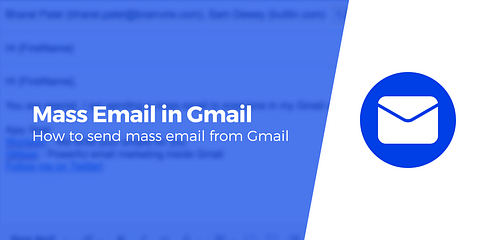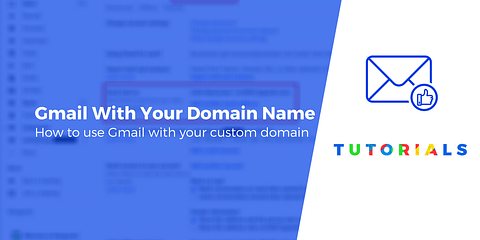Do you ever wonder if you could get better Google rankings without spending most of your time building links? Did you know that Google uses numerous high-impact ranking signals based on your content? This SEO checklist will show you how to effortlessly optimize your blog posts for better search visibility.
First thing’s first, it needs to stated right off the bat that Google continuously actively works on its algorithm to provide the best search results to match their users’ search intent.
The algorithm takes into account signals such as the aforementioned search intent, time spent on a page, and whether your pages are loading quick enough.
Overall, Google seeks to give priority to content that’s created for real humans and not bots.
How to use this SEO checklist? 🤔
This article will give you a clear understanding of how to write better blog posts. You don’t need to commit to the entire checklist either. Look for areas that you might be lacking in, and apply the said tips appropriately. The results will speak for themselves!
Let’s get to it.
Full SEO checklist in 2023 🗒️
Here’s your full checklist…
- Perform meticulous keyword research
- Monitor your competition
- Spend time creating engaging headlines
- Maximize time-on-page with video, etc.
- Create content hubs to boost internal posts
- Optimize your site speed
✅ 1. Perform meticulous keyword research
Keywords are the bread and butter for the entire SEO game. And rest assured, the traditional way of using keywords is no longer sufficient. Big keywords with an enormous monthly search volume have been oversaturated for years.
But it’s not all bad.
There are two new keyword branches you ought to use in your content:
- Long-tail. In-depth keywords which extend upon a singular idea. E.g. “NFL Players” (short-tail) vs “NFL Players who live in California” (long-tail).
- User intent. Why is a user searching for something? And how does your content answer their query?
In case you are not sure what long-tail keywords are, here is a straightforward illustration to decipher the meaning:

I liken it to answering basic questions.
First and foremost, you have one big general topic. And afterward, you add different sub-branches that support the topic. Those branches, in this case, are long-tail keywords. And most keyword research tools tend to provide this functionality by default. As an added bonus, this can also help you with voice search SEO.
If you don’t know where to start, look into Ubersuggest, Answer The Public, and LowFruits. You can put in your primary keyword, and get an output of many different long-tail suggestions.
The best part is that those suggestions are based on actual live traffic data.
Last but not least, when it comes to working with this SEO checklist — keywords will almost always dictate the depth and quality of your content.
✅ 2. Monitor your competition
There’s a saying among bloggers, “If you’re going to steal it, make sure you improve it.”. In other words, there’s nothing wrong with monitoring your competitors.
Take any phrase or keyword you’re trying to rank for. Now, run a simple Google search.
See how the top results are.
When analyzing the top results, ask yourself, “What is this page doing differently compared to mine?”. You can check for word length, heading allocation, and any other unique content elements.
The goal is not to become an identical copy. Your goal is to create content that’s simply better. There’s a reason your competitors are ranking highly and you’re not. Fix that.
✅ 3. Spend time creating engaging headlines
Your blog post title is arguably the most important SEO element. It’s what prefaces your entire post, but it’s also what users look at before they click on your search result.
If the content title is confusing, or God-forbid clickbaity, then you risk attracting the wrong audience.

This is an example of an effective headline. It has both a keyword and an actionable phrase that tells you what the post is going to be about.
Here is a checklist of things you will want to check before deciding on a final headline:
- Does it include modifiers: How to…, Why does.., Tips…, etc.
- Are you using a keyword inside the title?
- Does the title explain what the post is about clearly?
Using a plugin like Yoast SEO for WordPress, you can effectively minimize the amount of time it takes for you to come up with good meta tags.
Additionally, the Headline Analyzer from CoSchedule is another great tool to check the validity of your headlines.
Likewise, whenever you analyze your content against this SEO checklist – focus on making the headline as reflective of the content itself.
For more tips, check out our posts on how to write headlines and how to create catchy blog post titles.
✅ 4. Maximize time-on-page with video, etc.
Some SEOs call this dwell time. Basically, Google is expanding its ranking factors to include things like “time spent on-page”.
For example, a user is searching for “almond cake recipe”, and sees that there are multiple results for the same recipe.
Now, the user starts to click on search results to visit the listed site. At this point, Google is triggering its on-page algorithm to see whether the user stays on that page or leaves it immediately.
Google uses dwell time — which we can’t measure, but is proportional to user engagement metrics like bounce rate, time on site, and conversion rates — to validate click-through rates. These metrics help Google figure out whether users ultimately got what they were looking for.
Larry KimIf the majority of users leave the page shortly after clicking on it (usually through the Back button), then it’s a clear indicator that the content does not live up to its expectations.

Source: WordStream
So, how to tackle this and encourage people to spend more time on your posts?
Two things:
- Clearly defined and pleasant design.
- Additional multi-media: videos, images, infographics, etc.
You can apply a simple color psychology principle to accentuate the most important content. But most importantly, use multi-media content to provide both value and retain users on the page.
✅ 5. Create content hubs to boost internal posts
What are content hubs? Essentially, a content hub is where you house an organized library of your content.
If you’re a WordPress user, you’ll know that promoting your other blog posts isn’t always easy.
You can rely on internal linking, and related posts are also helpful. But more often than not, a lot of your posts never see the light of the day after the initial hype is over.

Brian Dean from Backlinko is using Content Hubs to categorize his entire blog. This makes it easy for readers to find the exact content they need, whenever they need it.
To create a Content Hub, you will need to create a new landing page on your site. Thankfully, the new WordPress block editor makes this an extremely fast process.
Next, you need to gather up all your blog posts on one specific topic. In the example shown above, the topic is “SEO Fundamentals”.
You can introduce the topic, and then provide links to your outgoing blog posts. You can even create additional pages and branch out your content even more.
The goal is to make it as accessible as possible for your readers. Afterward, you can link out to your Content Hub from any page or post. Including your site’s navigation.
✅ 6. Optimize your site speed
Are you curious as to why an SEO checklist would recommend site speed as a factor? The thing is…
Google loves site speed like bears love their sleep. The faster your website, the more consistently Google is going to reward your content.
Out of the box, these are the things you ought to focus on the most:
- Image optimization. Use a plugin such as Optimole to automatically resize and compress your images. You can get up to 70-80% reduction in file size without comprising photo quality.
- Resource management. Focus on fonts, scripts, and plugins that don’t impose too many external requests. Whenever you can, focus on hosting things locally.
- Lightweight themes. Don’t let the fancy features fool you! “Creative” themes often use a ton of JavaScript, which is known to hinder site speed exponentially.
If you want to learn more about site speed, check out Colin’s article on website speed optimization for 2023.
Conclusion 🏁
If there is one thing you need to remember from this SEO checklist, it’s this: Work hard on making your content as diverse as possible.
Find out how you can add even more value to your content without having to write a new blog post.
Don’t underestimate the fruit of your labor either. Consistent effort always returns a favorable result.
Here is a summary of what we learned:
- Long-tail keywords can be used to write content for a specific audience.
- Competitor analysis provides additional details on the types of content that ranks the best.
- Headlines are what lures readers in, make them count.
- Use design and multi-rich media to maximize time on-page.
- Categorize all your content using Content Hubs.
- Site speed leads to better rankings.
Do you have any questions about implementing these SEO principles on your website? Ask away in the comments!



















Or start the conversation in our Facebook group for WordPress professionals. Find answers, share tips, and get help from other WordPress experts. Join now (it’s free)!